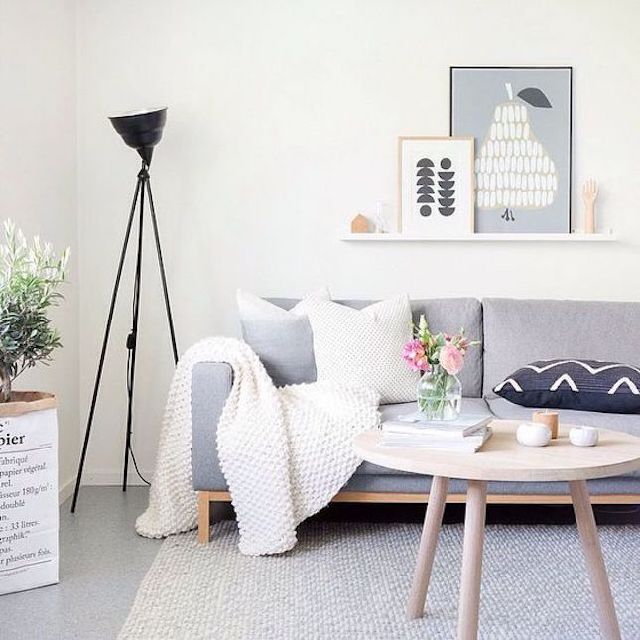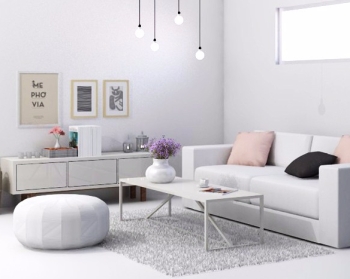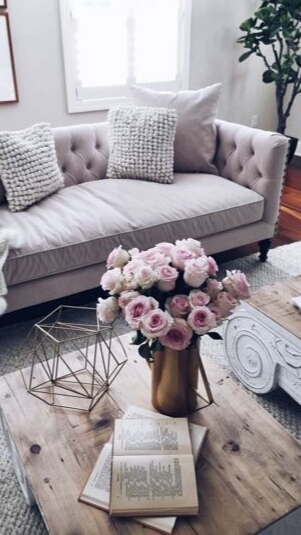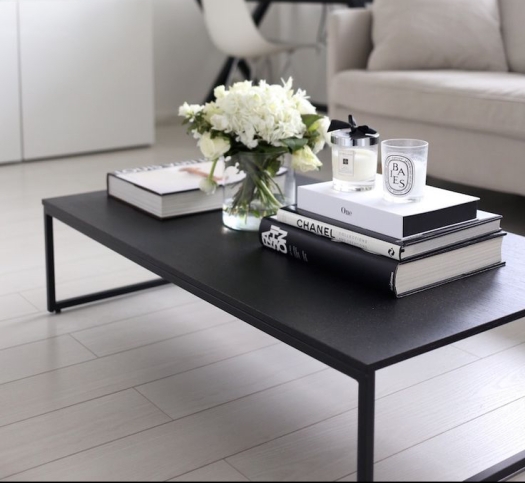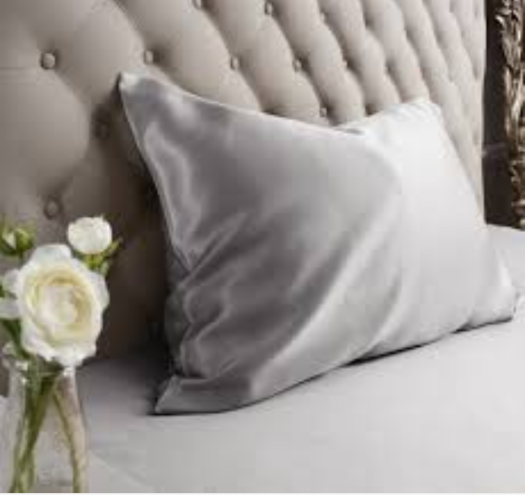Hello decorchasers! One of my closest friends asked me to write an entry about the living room. She just moved to her new house and is in the process of decorating.
Like I said last week, when I wrote about styling the coffee table, the living room is the presentation card of our home. I’m going to walk you through the fundamentals to start decorating your living room. The next couple of weeks I’ll write about mixing colors, hanging art, and lighting.
Fundamentals 101
The curtains: The higher the better! Hanging curtains to the ceiling and wider than the window frame is a perfect way to make the walls look taller and the room airier.
The sofa: The type of sofa you choose depends on your taste or what’s on trend. Think of scale, if your living room is small putting a big sofa there will only make it look smaller. I’m attaching an image of Erin Gates’ book Elements of Style at the end of the post. Make sure to check it out if you want to see the different styles of couches.
The conversation square: This term is something I made up (I think!). What I mean is that living rooms are meant to have a number of people sitting and having conversations. So how many seats do you need? Easy! How many chairs does your dining room have? If it has 8, you need sitting space on the living room for at least 8. Try to make a square or circle with all the seats so that it looks cozy and inviting. If you have a very big living room it is preferible to have more than 1 sitting area instead of spreading the sofa and chairs everywhere.
There should be 46cm (18″) between the sofa and the coffee table, and no more than 3 meters between each seat. This allows everyone to speak without having to raise their voices.
Before buying your sofa use tape and mark its silhouette on the floor, this way you can imagine how it’s going to look and make sure it fits.
Coffee table and side tables: Whoever sits in your living room needs to have a table nearby to put down their drink, or cellphone nowadays, so add tables accordingly.
The rug: At least two legs of all the main furniture should fit in the rug. This is going to be difficult if your living room has an unusual shape, but by all means, please avoid what the interior designer Erin Gates likes to call as the “rug island”, which is when only the center table is on the rug. If you fall in love with a small rug for your living room, place it on top of a larger neutral rug (look at the image at the end of this post).
The pillows: For small sofas use 50.8cm (20″) pillows, for larger and L shaped sofas use 22″ or 24″. For accent chairs use 18″ pillows.
Mirrors: No matter the size of your living room, mirrors help the room look brighter and give the ilussion that the room is larger.
TIP: Before buying anything take into account the size of the entry door, stairways and hallways. You are going to want to be able to fit your new piece into the house.
Remember “be honest about your lifestyle and stuff” when choosing your décor! (Erin Gates)
♥ Laters, Mari.


cof

cof
Erin Gates’ Elements of Style.
¡Hola decorchasers! Una de mis amigas más cercanas me pidió que escribiera acerca de la decoración de la sala. Ella se acaba de pasar a vivir a una casa nueva y está en el proceso de decorar comenzando de cero.
Como les dije la semana pasada, cuando escribí sobre la decoración de la mesa de centro, la sala es la carta de presentación de nuestra casa. Hoy les voy a explicar cuales son las piezas clave para decorar la sala y en las siguientes semanas escribiré sobre el color, como colgar arte e iluminación.
Fundamentos 101
Cortinas: Hay que colgarlas verticalmente bien cerca del techo, y horizontalmente debe ser más anchas que la ventana, de esta manera las paredes se ven mas largas y te asegurás que toda la ventana queda cubierta cuando las cierras.
Sillón: El tipo de sillón que escojás va a depender de tu gusto y de lo que está de moda. Pensá en la escala, si la sala es pequeña y ponés un sillón grande lo único que vas a lograr es que la sala se vea aún más pequeña. Al comienzo de este boletín puse una foto sacada del libro Elements of Style, de Erin Gates, donde vienen fotografiados varios estilos de sillones.
El cuadrado de conversación: Este termino lo inventé yo ( ¡eso creo! ). Lo que quiero decir es que el fin de la sala es sentar a un grupo de personas para que conversen. ¿Cuántos asientos necesitás? ¡Fácil! ¿Cuántos campos tiene tu comedor? Si tiene 8, igualmente necesitás mínimo 8 campos en la sala. Acomodá todos los asientos en un cuadrado o circulo de manera que se vea acogedor. Si la sala es muy grande, es mejor dividirla y hacer varias pequeñas zonas de estar, que una sola.
Deberían de haber 46cm (18″) entre el sillón y la mesa de centro, y no más de 3 metros entre cada asiento. De esta manera todas las personas pueden hablar sin necesidad de elevar la voz.
Antes de comprar tu sillón podes usar tape y marcar la silueta en el piso donde pensás ponerlo, de esta manera podes imaginártelo y asegurarte que encaja con todo lo demás.
Mesa de centro y mesa auxiliar: Quien sea que se siente en tu sala necesita una mesa cerca donde poner su trago, o en estos tiempos el celular, así que agregá las mesas que sean necesarias.
Alfombra: Al menos dos de las patas de cada asiento deben de quedar dentro de la alfombra. Esto se dificulta si el espacio de la sala tiene una forma inusual, pero por favor, evitá lo que la diseñadora de interiores, Erin Gates, llama la “alfombra isla”. Con esto se refiere a cuando sólo la mesa del centro está dentro de la alfombra. Puede pasar que te enamorés de una alfombra que es muy pequeña para tu sala, entonces ponéla encima de una alfombra grande de un color neutro. Como en esta foto:

Los almohadones: Para sillones pequeños usá almohadones de 50.8cm (20º), para sillones más grandes usá almohadones de 22″o 24″. Para una silla pequeña usá de 18″.
Espejos: No importa el tamaño de tu sala, un espejo siempre ayuda a que el cuarto se vea más iluminado y da la ilusión de que el cuarto es más grande.
TIP: Antes de comprar cualquiér pieza tomá en cuenta el tamaño de todas las entradas de tu casa, de escaleras y pasillos. Recordá tener mucha “honestidad sobre tu estilo de vida y tus cosas” cuando escojás el décor de tu casa. (Erin Gates)
♥Laters, Mari






